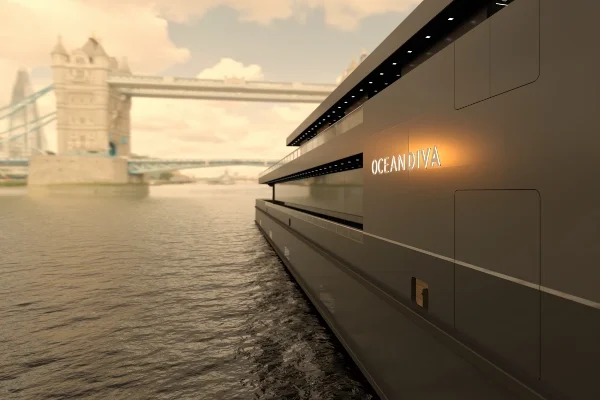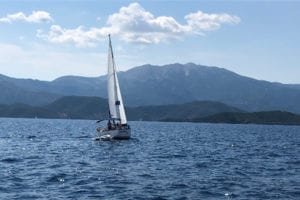Inside the high-tech glass structures you’ll find everything from flowers to bananas, and one has even opened its doors to visitors. Step into the atrium at Friðheimar and you’ll find a hidden gem of a restaurant, where you can watch your lunch grow before your very eyes. You can enjoy a bottomless bowl of tomato soup served with delicious fresh breads and cucumber salsa, wash it down with a Bloody Mary or Healthy Mary – a delicious twist on a Virgin Mary, made from green tomato, lime, honey and ginger and sparkling water – and round it off with a green-tomato cheesecake.
Bees fly round freely to act as natural pollinators and the only pest control is biological. Visitors can stroll round the greenhouse to admire the cucumbers, basil and four varieties of tomato that grow under panes of glass that are only 4mm thick. The insane heat required to keep such an uninsulated structure warm in sub-zero conditions comes from a borehole that supplies water naturally heated to around 95ºC. The whole restaurant experience was something akin to taking the back off a watch to reveal the beauty and intricacy of its intelligent design.
A secret spring
The same natural hot springs that keep the tomatoes (and bees) alive bubble through to the Earth’s surface just a short distance away; the ‘Secret Lagoon’ – or Gamla laugin – at Flúðir is Iceland’s oldest swimming pool, and more secluded than the tourist-drawing Blue Lagoon. Jets of hot water keep the water at around 38-40°C – perfect for enjoying a cold beer as you take in the frozen landscape.
You can combine a trip to the Secret Lagoon with a horseback adventure through volcanic hills and valleys with Eldhestar – ‘volcano horses’ – at Vellir farm. Both spots are easily accessible from the ‘Golden Circle’, a road that loops round Iceland’s most popular natural attractions – all within driving distance from Reykjavik. The full circuit can easily be done in a day, and will take you straight past Geysir, the world-famous hot spring in the geothermal valley of Haukadalur. While Geysir isn’t as active as it used to be, its neighbour, Strokkur, shoots boiling water as far as 40 meters into the air every few minutes.
Out to sea
You can’t go all the way to Iceland without getting on a boat and heading out to sea to marvel at the cold, deep blue of the North Atlantic. You might even spot a whale – though our hopes weren’t exactly high when we took to the water for a whale-watching tour.
For starters the minke and humpback are migratory – but more importantly Iceland, alongside Japan and Norway, is one of the only countries in the world in which commercial whaling is legal. Tourists are told whale meat is a traditional delicacy, yet a recent poll revealed only around 5% of Icelanders eat it on a regular basis.
On top of the threat of whaling is the threat of pollution; it’s been estimated that by 2050 there’ll be more plastic than fish in our oceans. Our guides on the Elfing tour were marine biologists with a passion for conservation, and they were thankfully keen to communicate the various threats to Iceland’s whales.
While whales didn’t make an appearance, white-beaked dolphins swam alongside our boat and gave us a great display as they danced in the water. They looked like they were celebrating something very special – and perhaps they’d even enlisted the help of a buddy to share it with.
Stopover Buddy service
Icelandair flies from Heathrow, Gatwick, Manchester, Birmingham, Glasgow and Aberdeen in the UK, with Belfast starting in June. There are onward connections to 18 North American gateways.
Return flights to Reykjavik start at £147* from Gatwick and £164* from Heathrow (including taxes).
Long haul passengers en route to North America can opt to stay in Iceland for up to seven nights for no extra flight cost. In fact, if passengers choose to stopover on their outbound journey then they’ll save around £50 per person on APD tax.
Icelandair’s free Celebration Stopover Buddy service, which runs until the end of March 2017, promises to turn a stopover into a great celebration. All buddies are members of the airline team; through their local insight and brilliant connections they’re the ultimate party planners for transatlantic guests.
Icelandair currently flies via Reykjavik to Anchorage, Vancouver, Edmonton, Seattle, Portland, Denver, Minneapolis, Toronto, Orlando, Washington DC, New York (JFK & Newark), Boston, Halifax, Chicago and Montreal. Flights to Philadelphia and Tampa will start in 2017.
The buddy service will run until 31 March 2017
* Prices subject to change; correct at time of going to print
Click here for more on Icelandair’s buddy service. Flights can be booked here.
 Play Video about This Rock Might Just Save The World
Play Video about This Rock Might Just Save The World Play Video about Play 2 hours of rock
Play Video about Play 2 hours of rock Play Video about Play 2 hours of brook
Play Video about Play 2 hours of brook Play Video about Play 2 hours of sheep
Play Video about Play 2 hours of sheep









































